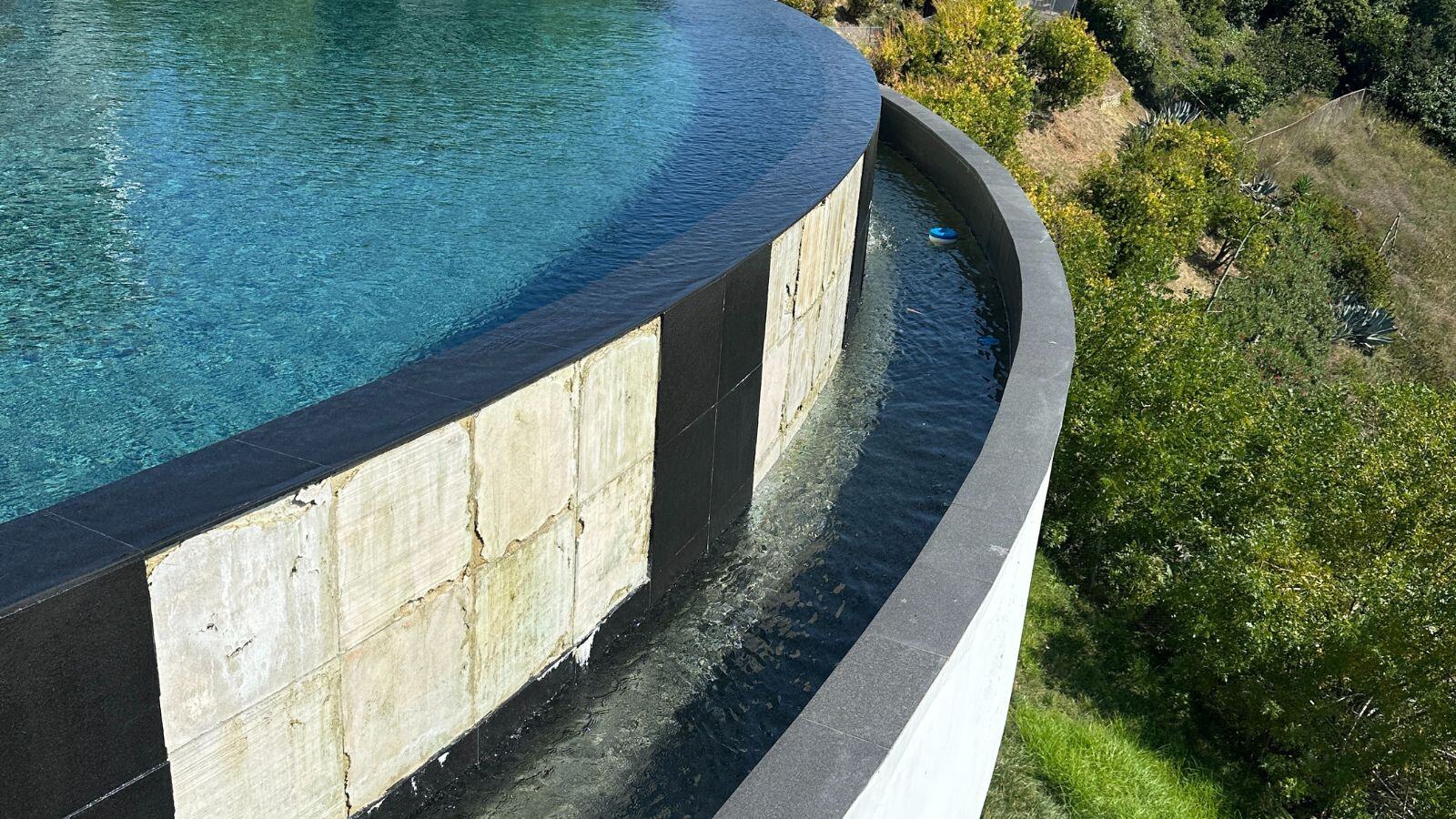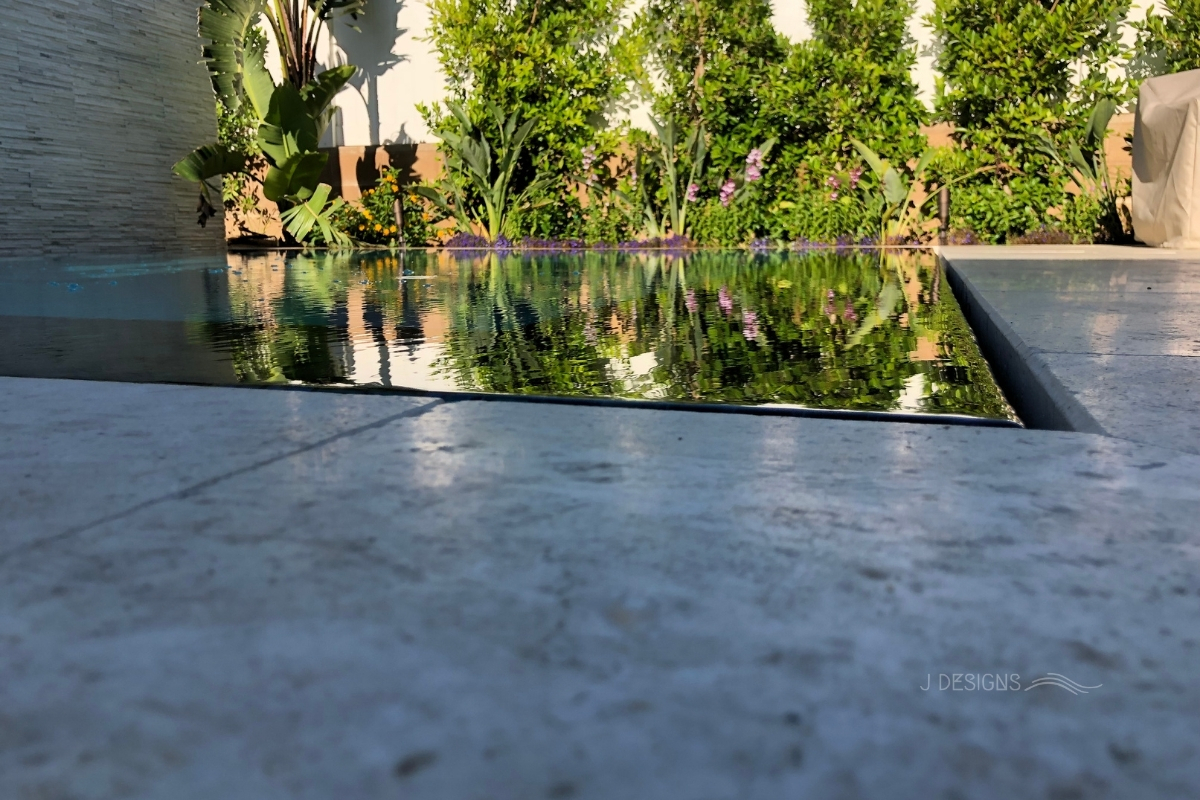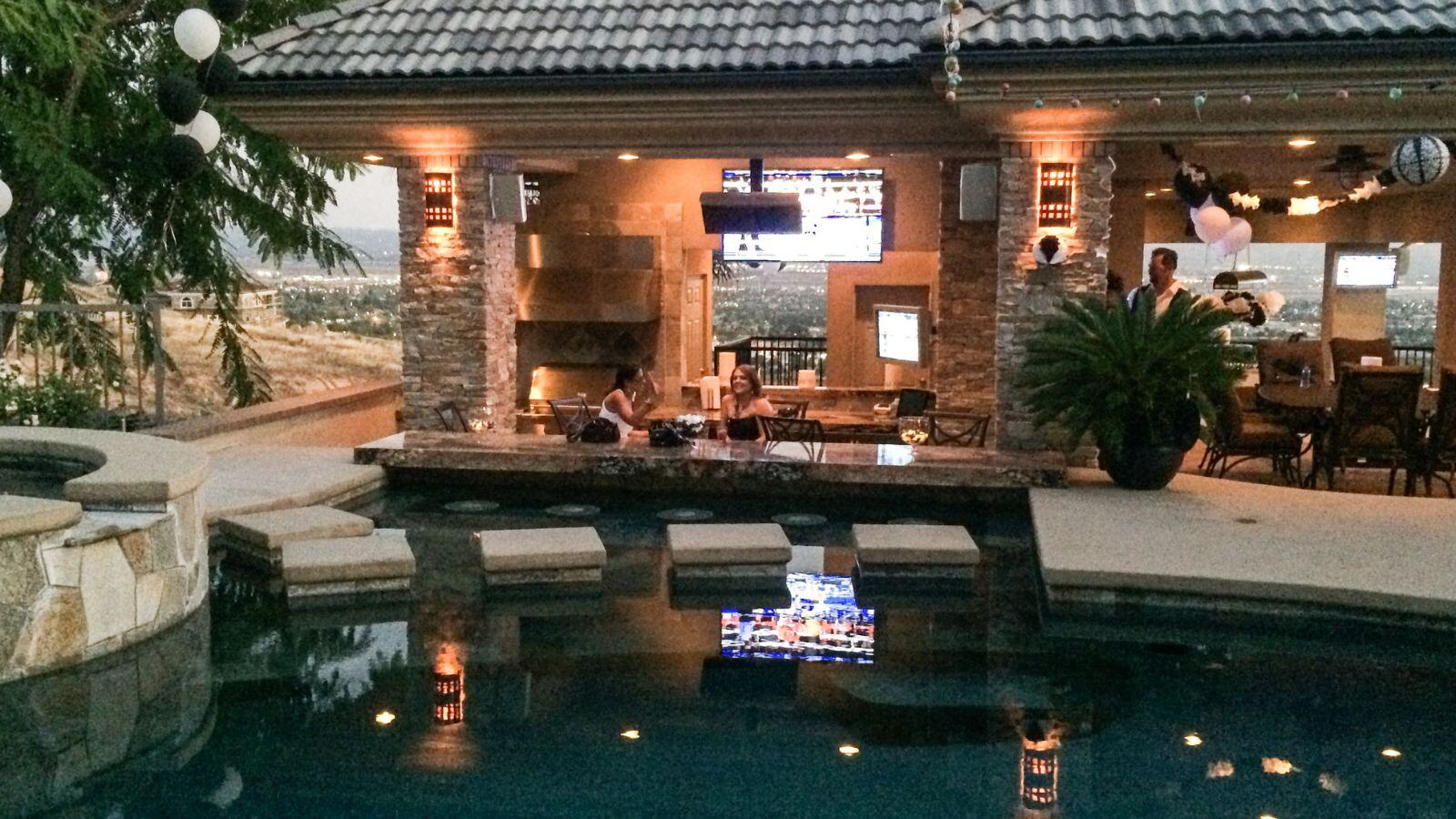Professional Pool Service: Why True Value Goes Beyond Price
When it comes to pool service, expertise is not optional; it’s required by law. In Los Angeles County, anyone performing maintenance, disinfection,...

All swimming pools are alike, but the materials you install make them different and unique. These materials allow you to personalize the space and make it memorable. The choice is yours, whether you’re aiming for the WOW factor or a more natural setting theme. However, one thing you might not consider is that those beautiful materials that looked stunning in a showroom or at a stone supplier could be why your pool may fall into disrepair in just a few years.
So, what can happen to your beautiful materials? The answer is Thermal Hysteresis, more commonly known as Thermal Shock.
The thermal hysteresis cycle is a phenomenon that describes a measurable, natural behavior of how materials expand, contract, and respond to repeated heating and cooling cycles in submerged and exposed to ambient or weather conditions. That means that this applies to all the pool materials. In school, they taught us that when water freezes, it turns into ice and gets bigger in volume because the water molecules spread out. This is why an ice cube is larger than the water it came from and why ice can crack the container that held the water, to begin with. Let's now understand how and why this is relevant to your pool project.

When materials heat up and cool down, they don’t always immediately return to their original dimensions. This is called Thermal Hysteresis. For example, pool and spa materials expand when they get hot and shrink when they cool, but they don’t return to their original size instantly. This delay can cause stress, cracks, or damage over time, especially in tile and other surfaces exposed to water and temperature changes.
One of the main components found in most stones is Calcite. This crystal expands more in one direction than another due to its natural forming environment and may cause veins to crack. These microscopic cracks are where moisture can enter and expand, especially when significant temperature changes occur.
A perfect example is the Aon Building (Chicago). The structure was built in 1973 and cladded with Italian white Carrara marble. The marble started to break and fall from 80 stories into the streets below in less than 20 years after the installation. (Architectural case study)
The same marble in Italy, after 500 years, shows no signs of aging under Tuscan weather, but marble in other climates may not withstand temperature fluctuations, especially when submerged or near water. Therefore, in regions like Chicago, where freezing and thawing conditions prevail during harsh winters and hot summers, visible distress has led to a ban on marble cladding for building exteriors in the US since then.
![Copy of [TEMPLATE] Vertical Blog Visual (1)](https://www.jdesigns.com/hs-fs/hubfs/Thermal%20Shock%20blog/Copy%20of%20%5BTEMPLATE%5D%20Vertical%20Blog%20Visual%20(1).jpg?width=267&height=356&name=Copy%20of%20%5BTEMPLATE%5D%20Vertical%20Blog%20Visual%20(1).jpg)
Thermal hysteresis happens when a material heats up or cools down faster than it can expand or shrink properly. For example, if a pool wall or stone surface sits in the sun, it gets hot. When the pump turns on and cold water flows over it, the sudden temperature change causes stress. Since materials don’t expand and contract at the same exact time, this repeated cycle can lead to cracks or damage over time. Protecting wet and dry areas can help prevent these issues.
When plotted on a graph, a thermal hysteresis cycle appears as a loop, where the heating and cooling curves do not perfectly overlap. This effect is seen in materials constantly exposed to heat cycles (from the sun, hot water, and cooling, from evaporation, cold water, or night temperatures). Especially if a portion of the same piece of stone is partially submerged and is evidently in what we call “Thermal shock.”
Material Composition & Internal Stress—Certain materials, like glass tile and natural stones (marble, granite, slate, and flagstone), have different thermal expansion rates than the cement or adhesives to which they are installed. This mismatch can cause delamination or cracking over time. An example is cementitious grouts that crack over time when temperature stress eventually creates a small crack. This results in slow but constant water penetration behind the materials, which deteriorates and accelerates the failure of such materials, along with the chemicals in pool water.
Nucleation Barriers—Materials with microscopic imperfections, such as air bubbles in glass or porous stone, and even small structural compositions can trigger more significant shifts when temperature changes occur.
Rate of Temperature Change: Sudden shifts, such as pouring hot water into a cold spa or rapid cooling after a hot day, accelerate material fatigue.

Stones like Marble, Granite, Slate, Flagstone, and tiles, especially Glass Tile, are often chosen for their durability, color vibrancy, and resistance to chemical damage. However, it is also highly susceptible to thermal hysteresis due to the following:
Adding to the expansion and contraction at a different rate of cement-based mortars, causing stress on the adhesive bond. The grouts are not waterproof either, and their improper installation or poor mixing technique also are contributing factors that, over time, can lead to tile delamination or pop-offs, especially in pools or spas exposed to extreme temperature swings.

Unlike flexible materials, for instance, glass tile has low elasticity, making it prone to microcracking when subjected to repeated heating and cooling cycles.
If small imperfections or cracks allow water behind the tile, freeze-thaw cycles can worsen expansion stress, leading to spalling or glass surface flaking in colder climates. Glass tile for pools undergoes rigorous testing by independent third parties to ensure the material is up to the challenge in a wet or submerged environment.
Dark-colored tiles absorb more heat, making them more prone to thermal expansion issues than lighter tiles, which reflect more sunlight.
.jpg?width=497&height=279&name=Sunset%20Oasis%20-%20Sunset%20Plaza%20_%20Hero%20Banner%20(3).jpg)
To minimize thermal stress and failure in pool and spa tile applications:
![Copy of Copy of [TEMPLATE] Horizontal Blog Visual](https://www.jdesigns.com/hs-fs/hubfs/Thermal%20Shock%20blog/Copy%20of%20Copy%20of%20%5BTEMPLATE%5D%20Horizontal%20Blog%20Visual.jpg?width=472&height=354&name=Copy%20of%20Copy%20of%20%5BTEMPLATE%5D%20Horizontal%20Blog%20Visual.jpg) Picture courtesy of Rock Solid Tile
Picture courtesy of Rock Solid TileUnderstanding thermal cycling is crucial in pool construction for applications exposed to fluctuating temperatures. Affecting natural stones, plaster, and especially glass tile installations. By understanding how materials expand, contract, and react to heat cycles, professionals can select the right materials, use proper adhesives, and design pools to minimize long-term structural issues.
ASTM International (American Society of Testing Materials) is an independent association that has developed a thermal insulation standard that is instrumental in specifying and evaluating materials and methods to reduce the heat transfer rate. Understanding materials' conductive, convective, and radiative behavior is essential in mitigating the effects of thermal hysteresis. (astm.org)
For tile applications, the Tile Council of North America (TCNA) provides guidelines and standards that address thermal considerations, ensuring that tile installations can withstand temperature variations without compromising integrity. (https://tcnatile.com)
At J Designs, we observe these recommendations and follow specific manufacturer guidelines. We also ensure that our clients understand these factors and implement best practices to mitigate potential issues caused by "Thermal Shock" in their projects. Meet with one of our designers, and let us guide you through the material selection process for your new pool construction or renovation project.
.jpg)
When it comes to pool service, expertise is not optional; it’s required by law. In Los Angeles County, anyone performing maintenance, disinfection,...

Have you ever seen a pool that looks like a mirror? Water blends seamlessly into the edge, perfectly level with the deck, flowing evenly in every...

Pool season is here, and it’s not just about crystal-clear water anymore. Today’s most memorable backyards are multisensory experiences, and...